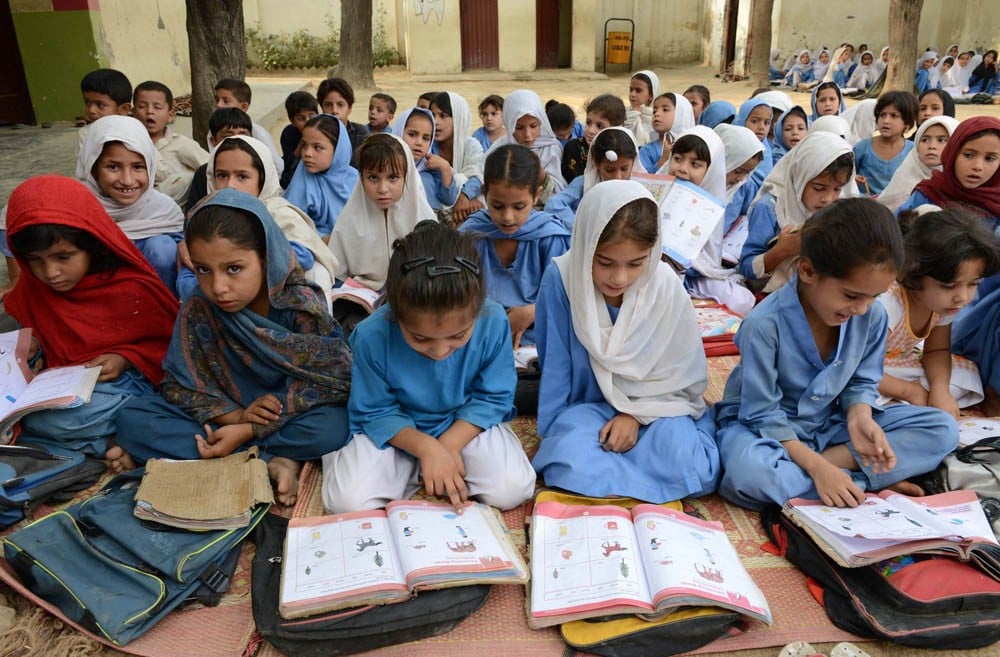
The Annual Status of Education Report 2015 reveals facts that challenge parents and society

Education is learning how to learn, how to refresh, regenerate and refine that learning; and how to apply such dynamic learning to benefit self and society.
In Pakistan, education has been equated with schools, colleges and universities, which are the traditional places striving to impart learning. But they are not the only ones. Homes, streets, media, and now small screen of mobile phones are the other places and channels where children learn critical, random, deeper, as well as wrong things.
In schools, children are made to learn what the values and politics of dominating collectivity require them to. In streets they learn whatever thrills, enchants and interests them. At homes they learn what parents repeatedly feed. Mostly, these sources of learning are in conflict with each other too.
Well, we all know that! But what we perhaps do not know is that children in Pakistan are not learning in schools: public or private, urban or rural. Or not as much as the education dispensers would like us to believe! That is what the Annual Status of Education Report (ASER) 2015 reveals.
On learning levels of children, as per ASER data, 45 per cent class 5 children could not read a class 2 story in Urdu/Sindhi/Pashto; 51 per cent class 5 children could not read class 2 level English sentence; and, 50 per cent class 5 children could not do two digit division.
ASER for the last several years has been raising alarm bells, which initially acted as radio-noise for the policy makers but recently the planners and policy makers have started paying attention. But the jarring reality of its lyrics is not music to parents and society.
ASER data (collection or analysis) is not a storm-in-a-tea-cup affair. It collects the largest data set outside the government. In the 2015 edition, detailed information was collected on 258,021 children, covering 83,755 households in 4,217 villages of 146 rural districts in all the provinces of Pakistan. In the process, 4,140 government schools and 1,510 private schools were surveyed.
On the composition of the sample, 59 per cent of the surveyed children were males, and 41 per cent females (aged 3-16 years). Out of the total, 219,609 children (aged 5-16 years) were tested for language and arithmetic competencies.
Two manifest barometers of effective and successful schooling are access to schools and quality of learning. In Pakistan, both are inadequate, flimsy and in a shambles. The learning crisis is evident in the ASER data. On access, 20 per cent of children were reported to be out-of-school; 14 per cent children have never been enrolled in a school and 6 per cent have dropped for various reasons.
Of those children who are in schools in the age bracket of 6-16 years, 75 per cent were enrolled in the government schools, whereas 25 per cent were in non-state institutions (22 per cent private schools, 2 per cent Madrassah, 1 per cent others).
The ASER data suggests that children enrolled in private schools are performing somewhat better compared to their government counterparts. 67 per cent children enrolled in class 5 in a private school were able to read at least a story in Urdu/Sindhi/Pashto as compared to 52 per cent class 5 children enrolled in the government schools. There are similar patterns in arithmetic: 61 per cent children of class 5 in the private schools were able to do division as compared to 47 per cent government school counterparts.
In the rural areas, girls are behind in both learning and enrollment. The reason is that there are not enough schools, and then there are not enough schools with girl-friendly facilities (the absence of toilets being the top most reason). Gender gaps continue in learning, as 51 per cent of boys and 58 per cent of girls could not do subtraction or read sentence in Urdu/Sindhi/Pashto.
Out of the surveyed schools, 48 per cent of government primary schools were without toilets and 40 per cent were without drinking water. And 22 per cent surveyed private primary schools were missing toilet facility. Then 40 per cent of the surveyed government primary schools did not have drinking water whereas 18 per cent of the surveyed private primary schools lacked this facility.
ASER 2015 has released the national rural findings only. The urban findings will be released in a few weeks. Besides learning and access, ASER collected data on early childhood education, gender gaps, multi-grade teaching, and school facilities.
Pakistan is a country whose governing elite seems to have opted for a data dearth by design. We had our last census in 1998. Though ‘education census’ are conducted, the ensuing data misses the correlation of educational downfalls with other social indicators like poverty, malnutrition, and internecine channels of learning.
It appears the key institutions entrusted with the critical job of planning are unwilling to capture, share and use accurate data. In the wake of this ‘data dearth by design’ in the public sector, ASER is a big feat. The governments’ relevant departments can work with it closely, which would help the official policy makers and planners move from data dearth to data that helps reduce the trust deficit as well as deficit planning.